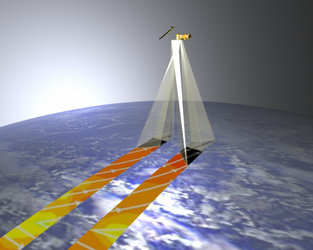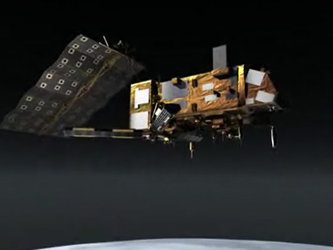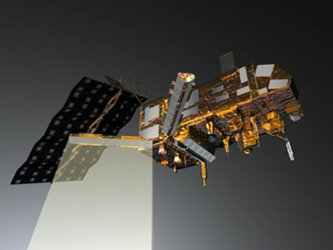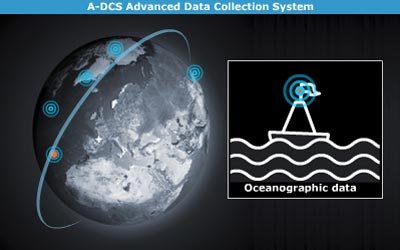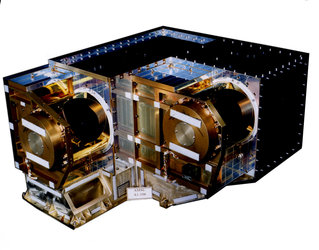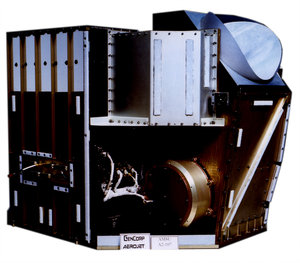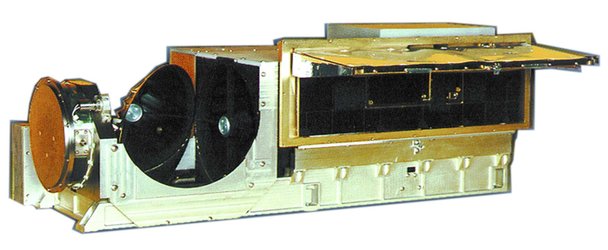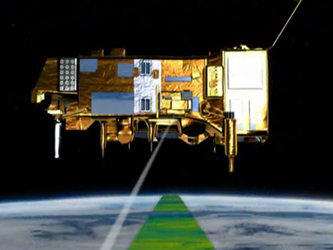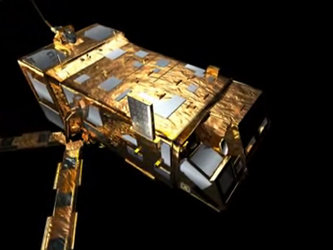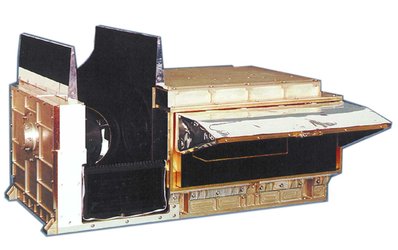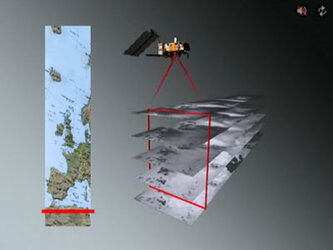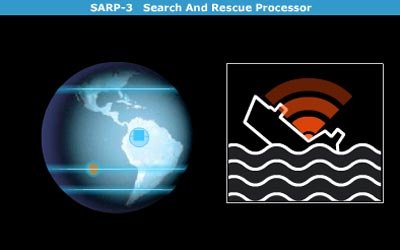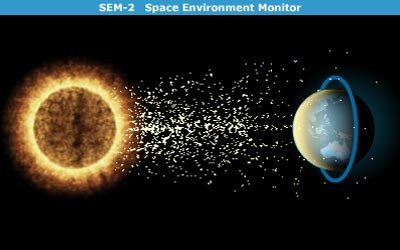ASCAT calculating wind speed and direction
Determination of wind vectors from radar measurements is based on the relationship between the radar scattering properties of the sea surface and the magnitude and direction of winds over the sea surface. This relationship is illustrated in the diagram.
The diagram shows how the radar backscattering coefficient (the quantity which the radar measures) varies with wind direction over a range of wind speeds at an incidence angle of 35°. The curves in the diagram correspond to wind speeds of 4, 8, 16 and 24 m/s. In general:
- high wind speeds give rise to high levels of backscatter
- at a given wind speed, up and down winds are associated with higher backscatter levels than crosswinds
For each swath, ASCAT uses the along track motion of the satellite and three antennas oriented to broadside and 45° forwards and backwards from broadside, to observe the scattering coefficient of its resolution cells from three different directions. These groups of three measurements are then fitted to families of curves like those above to derive the wind speed and direction.



